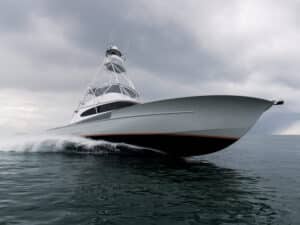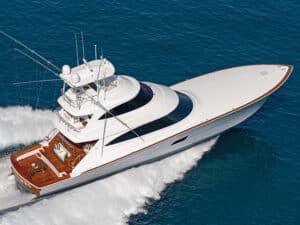
The Outer Banks has its share of colorful seafaring characters. Buddy Cannady definitely qualifies as one of them. A charter captain and former duck-hunting guide, Cannady has a shop in Manteo that builds one boat per year – built his way.
Cannady’s boats take about 25 weeks to build, and the process provides employment for a number of charter crews that don’t fish over the winter months.
The method of construction is called jig building – one of the oldest shipbuilding methods known to man. Cannady sinks heavy posts into an absolutely level floor and takes all the levels from that. His plans, sketched on grubby pieces of plywood at a simple 1-inch-to-1-foot scale, sit in a pile on a sawdust-laden shelf.
Though it may not sound like a sophisticated operation, Cannady’s boats are in huge demand. Of course, Cannady doesn’t care. He’s still going to build just one per year and fish during the summer. No one dances to the beat of his own drum better than he.
Cannady’s boats are meant for charter work. They’re not fancy or flashy. But anyone who can recognize real beauty in stark simplicity and functionality will instantly fall in love with Cannady’s hulls. Boats like the 56-foot Easy Rider, Cannady’s newest model, have enormous room below with plenty of storage for rods, tackle, bait freezers and the like. Open interiors offer little privacy except for the head.
Easy Rider boasts twin diesel power since her captain and owner, David Graham, plans to fish the Bahamas and other exotic locales when not after Oregon Inlet’s tuna and white marlin. However, most Cannady boats get a single diesel. When you fish 150 days each year, the cost and operation of a boat must be a nickel-and-dime affair. For that reason, the design and construction plays to the pocketbook. The keelson fits inside the hull instead of outside for less drag and better fuel efficiency. The hull consists of juniper frames and normal marine plywood. The bulkheads all go in while the boat is being framed so it all locks together. Then the planking goes over the outside, rather than putting the walls in last and having to tab them in.
Everything is simple, clean and functional – there’s no mistaking that this is a workboat. As Cannady says, “They’re good enough for those who use them.”







